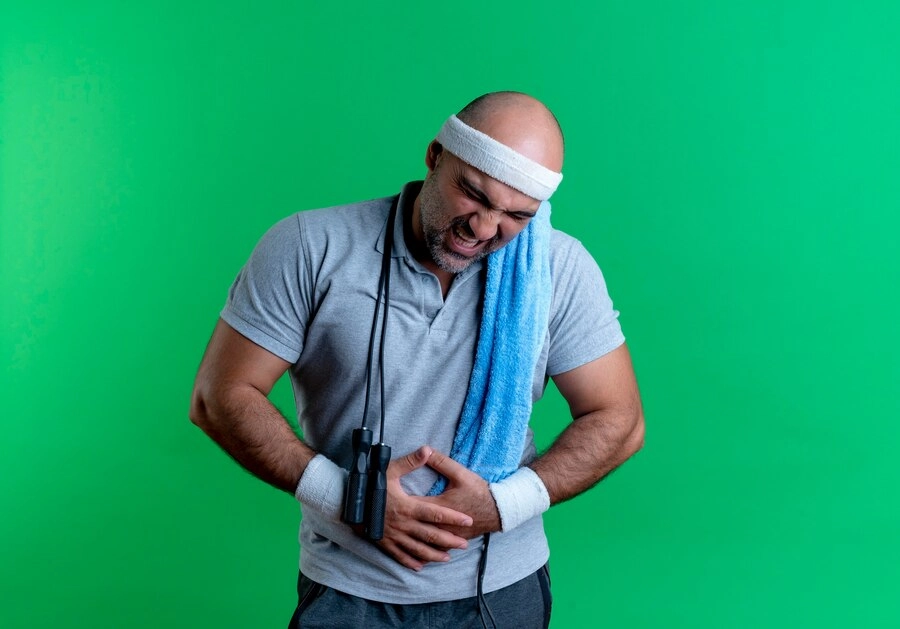What Is Bile Duct?
Category: General Surgery
The bile duct is an essential part of the digestive system, responsible for transporting bile, a digestive fluid produced by the liver, to the small intestine. Bile helps break down fats, absorb fat-soluble vitamins, and remove waste products such as bilirubin and cholesterol from the body. The bile duct system includes the common hepatic duct, cystic duct, and common bile duct, working together to ensure smooth bile flow from the liver and gallbladder to the intestines.
Blockages, infections, or inflammation in the bile duct can lead to serious conditions like cholangitis, gallstones, or bile duct cancer. For accurate diagnosis and treatment of bile duct disorders, patients can consult specialists at Lokmanya Hospital, a leading center for bile duct care, where advanced diagnostics and personalized treatment plans help ensure optimal digestive health.
Anatomy Of The Bile Duct
The bile duct system is a network of tubes that transport bile from the liver and gallbladder to the small intestine, playing a critical role in digestion and waste elimination. Understanding its anatomy helps in recognizing potential problems and the importance of specialized care at centers like Lokmanya Hospital.
1. Common Hepatic Duct
The common hepatic duct carries bile produced by the liver to the cystic duct and common bile duct. It serves as the primary pathway for bile flow, ensuring fats are properly digested and toxins are eliminated.
2. Cystic Duct
This duct connects the gallbladder to the bile duct system. It allows bile to flow into the gallbladder for storage and release it into the common bile duct when digestion is required.
3. Common Bile Duct
Formed by the junction of the common hepatic duct and cystic duct, the common bile duct transports bile into the small intestine (duodenum). Proper functioning of this duct is essential for fat absorption and overall digestive health.
4. Sphincter of Oddi
A muscular valve that regulates the flow of bile and pancreatic juices into the duodenum. It prevents backflow and ensures bile is released only when needed during digestion.
Functions Of The Bile Duct
The bile duct plays a vital role in digestion, nutrient absorption, and waste elimination. Proper functioning ensures that bile flows smoothly from the liver and gallbladder to the small intestine. Understanding these functions highlights why maintaining bile duct health is essential, and consulting specialists at Lokmanya Hospital can help prevent and manage related disorders.
1. Transporting Bile
The bile duct carries bile produced by the liver to the small intestine, enabling the breakdown of fats and absorption of fat-soluble vitamins like A, D, E, and K.
2. Storing Bile in the Gallbladder
Through the cystic duct, bile is stored in the gallbladder and released when needed during meals, ensuring efficient fat digestion.
3. Eliminating Waste Products
Bile helps remove waste substances, including bilirubin and excess cholesterol, from the body, supporting liver function and detoxification.
4. Regulating Bile Flow
The sphincter of Oddi controls the release of bile into the duodenum, preventing backflow and ensuring bile is available when digestion occurs.
5. Supporting Digestion and Nutrient Absorption
By emulsifying fats, bile facilitates the absorption of essential nutrients and promotes overall digestive efficiency, preventing malnutrition and gastrointestinal issues.
Common Disorders Of The Bile Duct
The bile duct is susceptible to several disorders that can disrupt bile flow, cause digestive issues, and lead to serious health complications. Early detection and treatment at Lokmanya Hospital can prevent long-term damage and improve outcomes.
1. Bile Duct Blockage (Obstruction)
Blockages caused by gallstones, tumors, or strictures can prevent bile from reaching the small intestine, leading to jaundice, abdominal pain, and digestive problems.
2. Cholangitis (Bile Duct Infection)
An infection in the bile duct often occurs due to obstruction and can cause fever, chills, jaundice, and severe abdominal discomfort. Prompt medical attention is critical.
3. Bile Duct Cancer (Cholangiocarcinoma)
A rare but serious condition, bile duct cancer develops in the duct lining, causing jaundice, unexplained weight loss, and dark urine. Early detection is vital for effective treatment.
4. Gallstones in the Bile Duct (Choledocholithiasis)
Gallstones may migrate from the gallbladder into the bile duct, causing severe pain, nausea, vomiting, and potential infection if not treated.
5. Biliary Strictures
Narrowing of the bile duct due to injury, surgery, or inflammation can restrict bile flow, leading to jaundice, recurring infections, and digestive issues.
6. Congenital Disorders
Some individuals are born with bile duct malformations that can cause bile flow problems and require specialized care from hepatobiliary specialists.
Diagnosis Of Bile Duct Disorders
Accurate diagnosis is essential for detecting bile duct disorders early and preventing complications such as infections, blockages, or liver damage. Specialists at Lokmanya Hospital use a combination of blood tests, imaging techniques, and advanced endoscopic procedures to assess the health of the bile duct system and provide timely, effective treatment.
1. Blood Tests
Blood tests help evaluate liver function and detect markers of obstruction, inflammation, or infection in the bile duct. Elevated bilirubin or liver enzymes often indicate bile flow issues.
2. Ultrasound
A non-invasive imaging technique, ultrasound can reveal blockages, gallstones, or structural abnormalities in the bile ducts. It is often the first step in evaluating digestive symptoms.
3. CT Scan or MRI
These imaging methods provide detailed, cross-sectional views of the bile duct and surrounding organs, helping detect strictures, tumors, or complex obstructions that may not appear on ultrasound.
4. Endoscopic Retrograde Cholangiopancreatography (ERCP)
ERCP combines endoscopy and imaging to both diagnose and treat certain bile duct problems, such as removing stones or placing stents to relieve blockages.
5. Percutaneous Transhepatic Cholangiography (PTC)
PTC is a specialized imaging procedure used when other tests are inconclusive. It provides a clear view of the bile duct and can guide interventions for complex cases.
Treatment Options For Bile Duct Disorders
Treatment for bile duct disorders depends on the underlying cause, severity, and patient condition. Early intervention ensures effective management and prevents complications such as infections or liver damage. Specialists at Lokmanya Hospital provide personalized treatment plans, combining medical, minimally invasive, and surgical approaches.
1. Medications
Antibiotics are prescribed for infections like cholangitis, while pain relievers and anti-inflammatory drugs help manage symptoms and inflammation in the bile ducts.
2. Endoscopic Procedures (ERCP)
Endoscopic Retrograde Cholangiopancreatography (ERCP) is used to remove bile duct stones, relieve blockages, and place stents for improved bile flow.
3. Percutaneous Interventions (PTC)
Percutaneous Transhepatic Cholangiography allows drainage of bile or treatment of strictures in cases where endoscopic methods are insufficient.
4. Surgery
Surgical options may be required for severe blockages, tumors, or congenital anomalies. Procedures can include bile duct reconstruction, removal of stones, or tumor excision.
5. Lifestyle and Dietary Support
Maintaining a healthy diet, staying hydrated, and avoiding alcohol and fatty foods support bile flow and liver function.
Disclaimer: This blog is for informational purposes only and is not a substitute for professional medical advice. For accurate diagnosis, treatment, or personalized guidance regarding bile duct health or related disorders, consult the experienced specialists at Lokmanya Hospital, who provide expert care tailored to individual patient needs.
Why Choose Lokmanya Hospital
Managing bile duct disorders requires specialized expertise, advanced diagnostic tools, and personalized treatment. Lokmanya Hospital offers a team of experienced gastroenterologists, hepatologists, and surgeons dedicated to providing accurate diagnosis, effective treatment, and continuous support for patients with bile duct conditions.
The hospital combines modern medical therapies, minimally invasive procedures, surgical interventions, and lifestyle guidance to ensure holistic care. Choosing Lokmanya Hospital means access to state-of-the-art facilities, expert specialists, and a patient-centered approach that ensures safe, effective, and comprehensive management of bile duct disorders.
Conclusion
The bile duct plays a vital role in digestion, nutrient absorption, and waste elimination. Maintaining its health is essential to prevent disorders such as blockages, infections, gallstones, and inflammation. Early detection, lifestyle adjustments, and proper medical care can ensure smooth bile flow and overall digestive wellness.
Consulting specialists at Lokmanya Hospital provides access to advanced diagnostics, personalized treatment plans, and comprehensive care for bile duct disorders. With expert guidance, modern facilities, and a patient-centered approach, patients can manage symptoms effectively, prevent complications, and maintain optimal digestive and liver health.
Frequently Asked Questions
1. What is the bile duct?
The bile duct is a system of tubes that transport bile from the liver and gallbladder to the small intestine, aiding digestion and waste elimination.
2. What are the main parts of the bile duct?
The bile duct system includes the common hepatic duct, cystic duct, common bile duct, and the sphincter of Oddi, which controls bile flow into the intestine.
3. What are common bile duct disorders?
Common disorders include blockages, cholangitis (infection), gallstones in the duct, strictures (narrowing), bile duct cancer, and congenital malformations.
4. What are the symptoms of bile duct problems?
Symptoms may include jaundice, abdominal pain, nausea, vomiting, dark urine, pale stools, fever, and unexplained weight loss.
5. How are bile duct disorders diagnosed?
Diagnosis involves blood tests, ultrasound, CT or MRI scans, ERCP, and PTC to evaluate bile duct structure and function accurately.
6. What are the treatment options for bile duct disorders?
Treatment may include medications, endoscopic procedures (like ERCP), percutaneous interventions (PTC), surgical options, and lifestyle adjustments for long-term health.
7. Can lifestyle changes help prevent bile duct issues?
Yes. Maintaining a healthy diet, staying hydrated, exercising regularly, limiting alcohol, and timely treatment of infections can reduce the risk of bile duct problems.
8. Why should I choose Lokmanya Hospital for bile duct care?
Lokmanya Hospital provides expert gastroenterologists, hepatologists, advanced diagnostics, personalized treatment plans, and comprehensive care for optimal management of bile duct disorders.







